Uterine infections in horses are divided into four categories in this text, namely:
-
Infectious uterine inflammation (CEM)
-
Uterine inflammation in horses after mating
-
Inflammation of the uterus in horses during pregnancy
-
Inflammation of the uterus in horses after foaling
Infectious uterine inflammation (CEM) in the mare
A contagious uterine infection is the so-called mating infection. The condition is also sometimes referred to as CEM, which stands for Contagious Equine Metritis (contagious inflammation of the lining of the womb in horses). It is caused by the bacterium Taylorella equigenitalis.
How does an infectious uterine infection (CEM) develop?
CEM was first observed in England in 1977. The bacterium is now widespread throughout Europe, but also occurs in Japan. About 1% of horses carry the bacteria. The bacterium is not contagious to humans. Contamination occurs during mating. Direct contact with contaminated objects, for example during artificial insemination, can also lead to infection. Foals can become infected during birth. This contamination becomes known only at the time of participation in reproductive activities.
How do I recognize CEM in the mare?
In horses that come into contact with the bacteria for the first time, uterine inflammation often occurs. This can be very light and barely noticeable, or with a lot of dirty discharge. The inflammation is temporary. Many mares come back into normal heat after CEM. After an initial infection, most mares show no further symptoms the next time. The bacteria remain in the horse's genital tract.
In the long term, CEM leads to reduced fertility. This manifests itself in a mare who is difficult to conceive, but can also manifest itself in the stallion's semen. This sperm is then less fertile. In addition, early embryonic death (decay) can often occur. The horse then becomes pregnant, but the foal dies early in the pregnancy.
A horse can carry the bacteria for years without being affected. A foal from an infected mare can be born normally. Stallions never show symptoms of CEM but play an important role in transmission of the bacteria.
How is a contagious uterine infection diagnosed?
A suspicion of Taylorella equigenitalis can arise when several mares covered by the same stallion suffer from CEM. For the diagnosis, the bacteria must be determined and therefore a smear must be taken from the stallion or one of the mares.
What is the treatment of infectious uterine inflammation (CEM)?
Treatment consists of topical administration of antibiotics after thorough cleaning of the genitals with a disinfecting soap. A therapy plan was drawn up for mares and stallions. The treatment lasts about 9 days and is not always effective. Sometimes a second or third treatment is necessary before the mare or stallion is fully recovered.
In addition, good hygiene and disinfection around the deck is very important. Artificial insemination instead of natural insemination can also offer a solution for mares suffering from CEM. Stallions carrying the bacterium T. equigenitalis must be excluded from natural mating. It is also unwise to use the semen of these stallions in artificial insemination.
Uterine inflammation in horses after mating
Postcoital (or "postcoital") endometritis in horses is inflammation of the uterus that develops after mating (coitus). Sperm is not sterile. This means that pathogens and other contaminants can be present in it. Most mares have a good defense against these pathogens, but in some cases the uterus did not have enough time to heal after mating and problems arose.
Uterine inflammation of the horse after mating
Post-coital (or "post-reproductive") endometritis in horses is an inflammation of the uterus that develops after mating (coitus). Sperm is not sterile. This means that pathogens and other dirt can be present there. Most mares have a good defense against these pathogens, but in some cases the uterus has not had enough time to heal after mating and problems arise.
What is the cause of uterine inflammation after mating?
During mating, the mare's cervix is dilated. This is necessary because the sperm must get to the uterus to fertilize the mare's eggs. Not only does sperm get into the uterus this way, but other pathogens and dirt are also left behind in the uterus this way. The horse's uterus reacts to this with an inflammatory reaction. This inflammatory response is necessary to clear away dead sperm, inflammatory fluid, and pathogens. This occurs within 48 hours of mating. Some horses are not able to eliminate this completely natural and necessary inflammatory reaction in time. At the moment when the uterus should actually be ready for the fertilized egg cell, an inflammation is still going on. If the inflammation lasts too long, too much fluid will remain in the uterus. The horse will then not become pregnant. The bacteria you bring with you can also cause uterine inflammation. Horses are not always able to eliminate the bacteria introduced during mating. Then bacterial endometritis develops.
How do I recognize uterine inflammation after mating?
The horse does not get pregnant despite mating or insemination. Because the fluid accumulates in the uterus, the discharge is not always visible. Also, the horse's cycle is much shorter than the usual 21 days. With bacterial endometritis, the mare becomes ill and may have a fever. However, this is not always the case. The mare is often lethargic and eats less.
How is the diagnosis made?
A mare that does not become pregnant, is in heat irregularly and/or has vaginal discharge is suspected of having an uterine infection. An examination by your veterinarian can confirm the suspicion. Often your vet will perform an ultrasound of the uterus to determine how much fluid is in the uterus. Often a swab must also be taken to see if bacteria play a role. It is important to find out which bacteria are involved.
How is uterine infection treated after mating?
Bacterial endometritis must be treated with antibiotics. However, many of the postcoital uterine infections are not bacterial and in many cases antibiotics do not help enough. In many cases it is necessary to administer medication to the mare to ensure that the excess liquid is eliminated. Your veterinarian may also decide to flush your horse's uterus to clean it.
How to prevent uterine inflammation after mating?
Bacterial endometritis after mating can be prevented by observing good hygienic conditions during artificial insemination. In addition, it is always advisable to have coverage monitored by an experienced equine veterinarian. This allows risk factors to be diagnosed and treated quickly, reducing the risk of uterine infection.
Inflammation of the uterus during pregnancy
Inflammation of the uterus can also occur during pregnancy. This inflammation is often accompanied by inflammation of the afterbirth/placenta (placentitis). The inflammation that occurs during pregnancy is often caused by pathogens. For example bacteria, fungi, viruses and yeasts. A small part of the uterus may be inflamed or the entire uterus may be inflamed.
How does uterine inflammation develop during pregnancy?
Inflammation of the uterus can occur in two broad ways. Via the bloodstream or via the vagina. Different pathogens get into the uterus in different ways. Viruses and yeasts often do this through the bloodstream. While bacteria normally enter through the vagina. In many cases, the bacteria get into the uterus because the mare's cervix does not close properly. It is also possible that the mare sucks air through the casing and in this way sucks in bacteria.
How do I recognize uterine inflammation during pregnancy?
Inflammation of the uterus during pregnancy is often difficult to detect. When rhinopneumonia virus (EHV1) is the cause of the uterine infection, the virus often causes the mare to shed before it is noticed. Then there is early embryonic death. Normally the mares are not visibly ill. In some cases, a whitish discharge can be seen from the mare's vulva. In almost all cases of endometritis during pregnancy, the mare has an abortion/abortion or the foal is born prematurely. An attentive breeder may notice this because the udder is developing unexpectedly early or because milk is being produced.
In some cases, the mare has a normal gestation period, but then a dead foal is born. The foal can also be born very limp. In addition, it is even possible that the foal is born healthy but then becomes terminally ill within a few days.
How is the horse diagnosed?
Because there are so many different pathogens, it is very difficult to make a good diagnosis. In addition, many of these types of uterine infections pass without anyone noticing. Early embryonic death occurs or there are no symptoms at all.
The diagnosis is therefore not always made in the same way. Depending on what your vet suspects to be the cause, he/she will decide to perform a specific test. Sometimes your vet can examine the uterus and amniotic sac with a rectal ultrasound. It is often possible to get an impression of the pathogen. The history of the mare can also be important. How did previous pregnancies go, was there an operation or did the mare just have a viral infection? Your vet may also decide to look through the vagina into the uterus.
In many cases, having an aborted foal's placenta examined can be very helpful. Certain pathogens can occur here. Finding these pathogens can lead to correct and timely intervention in a subsequent pregnancy. You will then know which pathogen plays a role in your mare. There is a good chance that the same pathogen will cause problems again in a subsequent pregnancy. Therefore, always have the placenta checked by your veterinarian, especially if the foal was born prematurely or is dead!
How is uterine infection treated during pregnancy?
If uterine inflammation is diagnosed in good time, for example if you already know which pathogens have caused problems for your mare in the past, it can be treated correctly. Treatment must be long-term and consists of antibiotics, anti-inflammatories and hormones to maintain the pregnancy. If bacteria have gotten in because your mare is sucking air through her vagina, surgery (Caslick surgery) can help. The mare is then "closed" and can no longer suck in air. With this operation it is very important that the vagina is opened again in time (by the vet!) so that the foal can be born. Unfortunately, there is no treatment for uterine infections caused by viruses, fungi, or yeast.
How can uterine inflammation be prevented during pregnancy?
It is very important that you seek advice from your veterinarian during reproduction. As discussed in other parts of this equine health guide, there are a number of problems that can arise that a veterinarian can identify early on. If your mare has previously miscarried or had a premature foal, it is always a good idea to have the placenta sent in for an examination. As already mentioned, pathogens often cause problems one after the other, which can then be treated in time if necessary. Keeping your mare in good condition during pregnancy is also very important. Therefore, make sure you have good nutrition, sufficient social contacts, good accommodation and the right vaccinations. Don't forget to deworm your mare in good time.
Inflammation of the uterus in mares after the foal
Endometritis, or inflammation of the uterus, is common in horses. Especially in mares that are bred regularly. They can occur during the breeding season, during gestation, just after foaling, or at any time of year. In principle, any mare can develop endometritis, including horses that are not used for breeding. In this article, inflammation of the uterus shortly after the birth (endometritis post partum) is discussed.
How does endometritis develop?
Endometritis is inflammation of the uterine wall. The uterine wall produces a lot of fluid, which can remain in the uterus or leak out through the vagina (vulva). Not in all cases a mare will have a dirty discharge when there is uterine infection. The horse is "dirty" when there is discharge from the vulva.
Inflammation of the uterus often occurs because pathogens have penetrated the uterus or the uterus was unable to expel the foreign content. For example, if the sperm or placenta stays in the uterus for a long time, the uterus sees it as "not their own" and the uterine wall reacts to it. This causes the uterine wall to become inflamed in hopes of removing or expelling the foreign object. In very few cases, pathogens can enter the bloodstream and cause blood poisoning (sepsis).
What Causes Postpartum Endometritis?
Postpartum endometritis almost always leaves a piece of the placenta behind (afterbirth). Even a very small piece can cause severe uterine inflammation. Therefore, it is very important that you have the afterbirth examined by your veterinarian after the foal. The entire placenta should be expelled within 6 hours after the foal. Damage to the uterus or the birth canal can also lead to endometritis after childbirth. This can happen through movements of the foal or through actions that were necessary to put the foal in the right position. Finally, unhygienic examinations (e.g., "feeling" the mare without properly washing her hands) during or after birth can lead to infection.
How do I recognize a uterine infection after the foal?
Typical postpartum endometritis occurs within a few days after birth. This inflammation always represents a danger for the mare and a veterinarian must be contacted if there is any suspicion! Many breeders recognize this form of endometritis quite quickly. The horse suddenly becomes less alert and often gets a high fever. Often the placenta has not or not completely detached. The mare was "on the afterbirth" or had a "retentio secundinarum". The mare can also get laminitis, sometimes the disease is only recognized when the mare suffers from laminitis. She doesn't want to walk anymore or only for a very short time. With any newborn horse that is no longer alert and has a (high) fever, you must contact your veterinarian immediately! A mare whose afterbirth (placenta) has not fully (or not) released is at higher risk and should be monitored closely.
How is uterine inflammation diagnosed after the birth?
First, your vet will want to know how the delivery went and if the afterbirth/placenta came out completely. If there was a problem at any point during foaling, the risk of endometritis is increased. Your veterinarian will make the diagnosis after an internal examination of the horse.
How is uterine inflammation after the foal treated?
Depending on the severity of the symptoms, a specific treatment must be carried out. Provided the mare does not already have laminitis, treatment consists of frequent uterine douching. This rinsing should not be done with ordinary tap water, but with a specific liquid that is tailored to the needs of the tissue. Your vet will need to remove all of the placental debris from the uterus prior to flushing. In many cases, the uterus needs to be flushed for a few days to a week. In severe cases it may be necessary to do this several times a day. Your vet will also inject your mare with a specific hormone that causes the uterus to contract. This is necessary because in this way everything is pushed out of the uterus.
Depending on the severity, your vet may supplement this treatment with anti-inflammatory agents and/or antibiotics. In addition, it is very important that you pay attention to the temperature, the pattern of the discharge (how much is it and what does it look like) and any symptoms of laminitis.
How can uterine inflammation after the foal be prevented?
Unfortunately, postpartum endometritis cannot always be prevented. In many cases, certain things can help. For example, do sports in the first few days after the birth. This ensures that the contents of the uterus drain faster and the mare is "clean" faster. The foal's drinking also releases the hormone oxytocin, which makes the uterus contract better. This allows dirt to be removed more quickly. In addition, hygiene around the birth of the foal is very important, as already mentioned. And not unimportant is making sure that the entire placenta has detached within 6 hours. If you are unsure about this, it is better to ask your vet to come by than to wait and see.
This text was translated by a translation machine
 Horse Pharmacy
Horse Pharmacy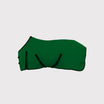 Rugs
Rugs Care
Care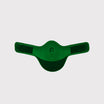 Saddle and Attachments
Saddle and Attachments Leg Protection
Leg Protection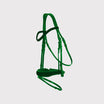 Bridles
Bridles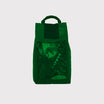 Feed
Feed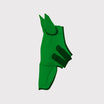 Fly Masks
Fly Masks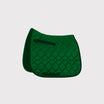 Saddle Pads
Saddle Pads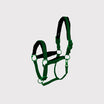 Headcollars and Ropes
Headcollars and Ropes Bits
Bits Other Disciplines
Other Disciplines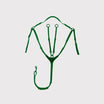 Reins and Auxiliary Reins
Reins and Auxiliary Reins Clipping
Clipping Western
Western Eventing
Eventing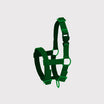 Foals
Foals Reflection
Reflection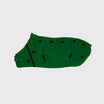 Therapy Products
Therapy Products Boots and Shoes
Boots and Shoes Breeches and Belts
Breeches and Belts Tops
Tops Safety
Safety Competition
Competition Heated Clothing
Heated Clothing Gloves
Gloves Socks
Socks Spurs and Attachments
Spurs and Attachments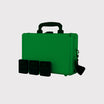 Technology
Technology Whips
Whips Gifts
Gifts Casual Wear
Casual Wear Underwear
Underwear Rider Pharmacy
Rider Pharmacy Bags
Bags Books
Books Laundry supplies
Laundry supplies Jewelry
Jewelry Feed and Waterbowls
Feed and Waterbowls Equipment
Equipment Tack Room
Tack Room Pest Control
Pest Control Arena
Arena Horse Toys
Horse Toys Wheelbarrows
Wheelbarrows Yard
Yard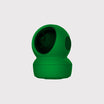 Surveillance
Surveillance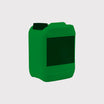 Disinfect
Disinfect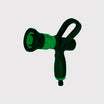 Washing Area
Washing Area Lighting
Lighting Horse Pasture
Horse Pasture Current Conductors
Current Conductors Pole
Pole Insulators
Insulators Energisers
Energisers Gate Handles
Gate Handles Batteries and Accumulator
Batteries and Accumulator Nets
Nets Grounding
Grounding Tools
Tools Fencing Security
Fencing Security Wolf Defense
Wolf Defense Fencing Sets
Fencing Sets Fence locks
Fence locks Dogs
Dogs Cats
Cats Rodents
Rodents Dogs Pharmacy
Dogs Pharmacy Cats Pharmacy
Cats Pharmacy Rodents Pharmacy
Rodents Pharmacy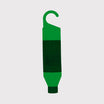 Cattle Pharmacy
Cattle Pharmacy Poultry Pharmacy
Poultry Pharmacy Veterinary Supplies
Veterinary Supplies Cattle
Cattle Sheep and Goats
Sheep and Goats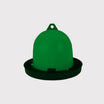 Poultry
Poultry Heat Lamps
Heat Lamps Calves
Calves Marking
Marking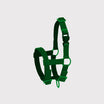 Halters
Halters